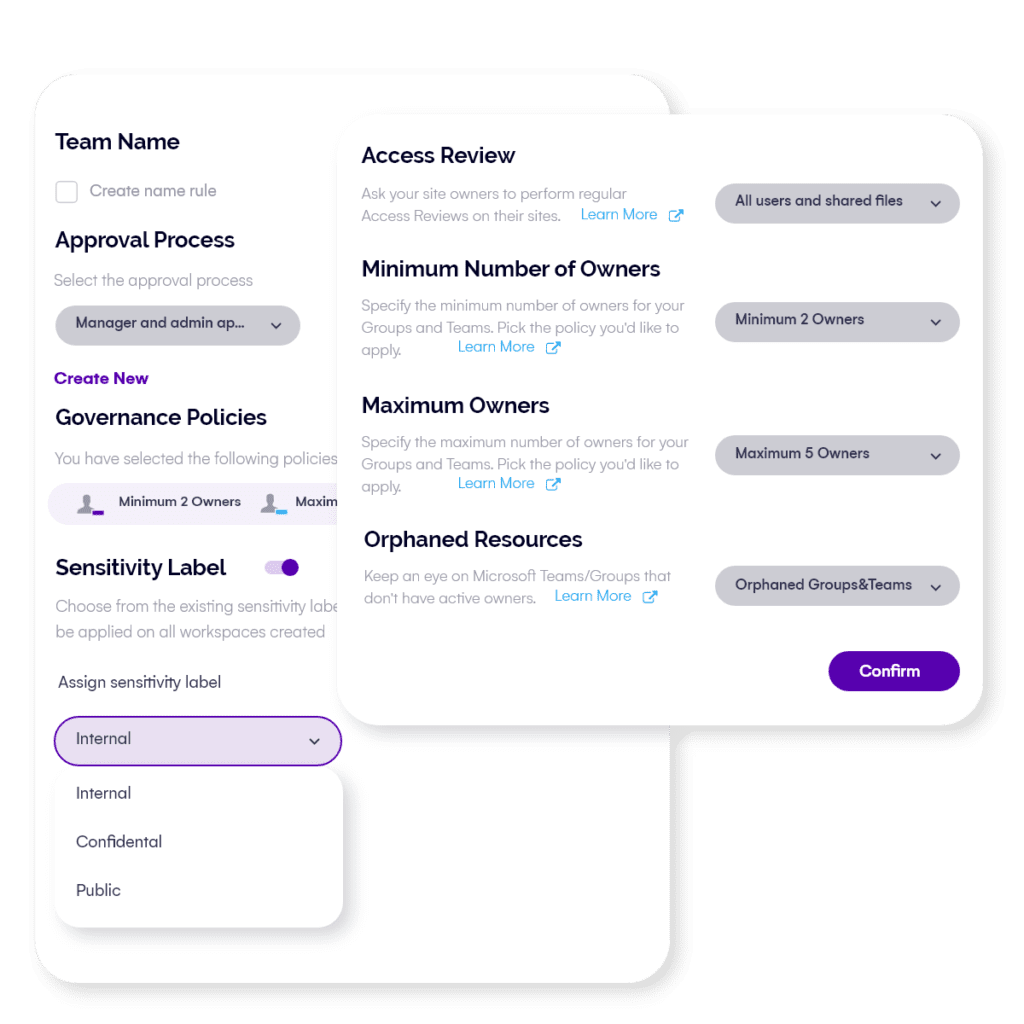Healthcare’s move to the Cloud: Securing your Microsoft 365 environment
Table of contents
It’s no news that many healthcare organizations have migrated to the Cloud. We can all agree that it makes sense: it’s much more scalable, cost-efficient, allows modern automations, and is significantly easier to manage in large-scale organizations. However, as cloud adoption accelerates, healthcare cloud security becomes a growing concern. What may come as a surprise is how incredibly fast the numbers are increasing.
Approximately 81% of healthcare leaders have already adopted cloud solutions in most or all parts of their business, according to a 2023 PwC report (PwC, 2023). Furthermore, the global healthcare cloud computing market is set to jump from $43.84 billion in 2023 to $115.95 billion by 2029. That’s a staggering 17.6% compound annual growth rate (Healthcare cloud computing market and competition insights to 2029, 2024).
In tech, those adoption numbers are massive!
What does that mean for you?
Cloud adoption in healthcare is no longer a “maybe”—it’s inevitable.
If your organization isn’t already leveraging cloud solutions like Microsoft 365, you’re not just behind the curve, you’re falling off the map.
- The remaining 19% of organizations not yet on the Cloud will be by 2029.
- Those in hybrid solutions are quickly shifting gears to move more or all of their operations to the Cloud.
- And those innovators that have been 100% cloud-based for a while are expanding their footprint by adopting AI/ML-powered diagnostics, building telehealth expansions, and more advanced cloud compliance tools.
Why Healthcare providers choose Microsoft 365: Compliance, security, scalability
What makes Microsoft 365 a top choice for healthcare providers? It’s not just a cloud service; It’s a comprehensive ecosystem that integrates communication, collaboration, security, and compliance tools tailored for the complexities of healthcare. With the expansion of telehealth and healthcare networks operating across multiple locations, the focus has shifted from merely managing data to ensuring seamless collaboration across multiple points of care.
- Seamless Collaboration & Accessibility – Whether it’s a doctor consulting with specialists across the country or a nurse accessing patient records from a different clinic, Microsoft 365 allows healthcare teams to collaborate in real time, from anywhere. With tools like Teams, SharePoint, and OneDrive, patient data and care coordination are easier than they have ever been.
- Cost Efficiency & Operational Savings – On-premises servers are expensive. The hardware needs to be updated, and staff needs to be available to keep services up. By migrating to Microsoft 365, healthcare organizations cut these costs significantly, shifting to a predictable subscription-based model that is easy to manage with Azure Cost Management + billing.
- Scalability to Meet Demand – Healthcare IT needs aren’t static. Expanding hospital networks, launching new telehealth services, or adapting to changing patient loads all require easy, quick, and efficient scaling. Microsoft 365 does so effortlessly, allowing IT teams to add or remove users, adjust storage, and integrate new services with minimal disruption, all the while controlling costs and making sure you only pay for what you use.
There is one caveat in this fantastic migration: with more patient data moving to the cloud, compliance risks and cyber threats are escalating and healthcare cloud security is becoming a critical piece of the puzzle. Your cloud sales agent may tell you that the Cloud has no risk, but it does, just like your on-premises server did as well, which is why you had locks and keys and paid for security.
IT leaders need to ensure not only a smooth migration, but strong healthcare cloud security in their organization. Governance, access controls, and compliance frameworks must evolve as fast, if not faster, than these amazing adoption rates.
Simply put: Cloud adoption isn’t slowing down, but neither are the risks. The real question is—how do you stay ahead of both?
Overcoming HIPAA & GDPR challenges in Microsoft 365 for Healthcare Cloud Security
Now that we’re all on the same page and we all love the Cloud, it’s time to put a pin it, for just a second. The Cloud is fantastic, but it also presents challenges, particularly when it comes to compliance with regulations like HIPAA (Health Insurance Portability and Accountability Act) and GDPR (General Data Protection Regulation):
- Data Security and Privacy: Ensuring that Protected Health Information (PHI) remains confidential and secure is crucial. Microsoft 365 provides tools to support HIPAA compliance, but organizations must first configure the settings appropriately, otherwise it falls short.
- Access Controls: Effectively managing who has access to sensitive data is THE most underrated security risk. Improper access can constitute a compliance violation and could lead to lawsuits that can destroy your organization’s reputation.
- Data Residency: GDPR mandates that personal data of EU citizens be stored within the EU. Healthcare organizations must ensure their healthcare cloud security is properly set up to keep all data in the EU, including backups and duplicates.
Handling Private and Patient Data: Are Healthcare professionals trained to use Microsoft 365 services?
When I walked into the Intensive Care Unit as a fresh nurse some decades ago… I knew nothing about technology and struggled to even access my emails. After a few years on the unit, I could confidently state that my knowledge of the technology at my disposal had increased by about 10%.
The reality is healthcare professionals are not IT professionals, nor should they be, and are given zero to no training on the technology to which they have access. The risk of violating compliance regulations in a “I kind of know how to use this” scenario is huge.
According to a report by the Ponemon Institute, the average cost of a data breach in the healthcare sector is $9.23 million, the highest of any industry.
Common scenarios include:
- Accidental Sharing: Sending emails containing PHI to unintended recipients or misconfiguring sharing settings in OneDrive or SharePoint. That is a lawsuit in the making.
- Improper Storage: Saving sensitive information on personal devices or unsecured locations increases the risk of data breaches. If you knew just how often this happens in your organization, right under your nose, and without your knowledge, you would faint.
BUT, have no fears, because the solution is clear.
You need proper governance of course, but you also need to make sure staff are continuously refreshed on cybersecurity training such as:
- Data Handling Protocols: Best practices for storing, sharing, and accessing patient data.
- Security Awareness: Training on recognizing phishing attempts and other common cyber threats.
Hackers and phishers are becoming more sophisticated. Common sense is no longer enough to recognize all risks. Your front-line staff are the most common targets.
Bridging the gap: IT decision-makers vs. admins in Healthcare Cloud Security
As an IT decision-maker, you need to understand the day-to-day battlefield that your IT administrators are facing when it comes to healthcare cloud security. While you focus on strategy, cost optimization, and digital transformation (as you should), your IT admins are in the trenches, dealing with the security threats, compliance headaches, and access requests… a lot of access requests.
No governance, and those trenches will flood. And so will your IT administrators.
Here is what you need to know:
- Complex Compliance Configurations Are not a One-Time Fix – HIPAA and GDPR compliance in Microsoft 365 are not “set it and forget it”. Every time a new team is created, a user is onboarded, or a file is shared externally, compliance risks shift. Admins must constantly monitor permissions, access, and sharing settings.
- User Management Is a Never-Ending Balancing Act – Doctors, nurses, and admin staff need quick access to patient data, but overly permissive access can lead to accidental data leaks. IT admins spend hours reviewing permissions, revoking outdated access, and explaining why “everyone in the hospital” cannot have full admin rights. It’s a full-time job.
- Incident Response is a High-Stakes Race Against Time – Security incidents in Microsoft 365 happen daily: phishing attacks, ransomware threats, and unauthorized access attempts. Admins must catch and resolve threats immediately… However, most do not have real-time visibility into who accessed what, when, and how. That’s like trying to catch a baseball while blindfolded and without a glove.
So how can you fix it?
- Align IT Security Strategy with Operational Reality – Hold regular check-ins with IT admins to understand on-the-ground healthcare cloud security challenges.
- Educate Employees, Not Just IT – Most security breaches happen due to human error, not sophisticated hacking. Invest in ongoing Microsoft 365 security training for all staff. Your IT admin knows what email not to open, but the ten new residents who just started their rotation do not.
- Give IT the Right Tools – Invest in tools that include automated governance, such as Syskit Point, which helps IT teams enforce security policies, monitor access, and generate reports to help meet compliance requirements. In other words, remove the blindfold. IT teams can include end users in access reviews, as they know the content on their sites the best and who should have access. For non-tech-savvy end users, Syskit Point is easy to use and helps speed up getting access to the appropriate workspaces and files.

6 tips for preventing Healthcare compliance violations in Microsoft 365
Now that you are aware of the incredible potential that the Cloud can and will bring to your organization as well as its challenges, a good old-fashioned health check is in order.
Here is our recommended governance checklist:
- Conduct Regular Risk Assessments: Identify potential vulnerabilities and implement strategies to address them.
- Implement Data Loss Prevention (DLP) Policies: Configure DLP settings to prevent unauthorized sharing of sensitive information.
- Enforce Multi-Factor Authentication (MFA): Require MFA for all users to add an extra layer of security.
- Regularly Review Access Permissions: Ensure that only authorized personnel have access to PHI and other sensitive data.
- Utilize Audit Logs: Monitor and review audit logs to detect and respond to suspicious activities promptly.
- Engage Tools Like Syskit Point: Syskit Point helps simplify health compliance efforts with automated governance, access reviews, and audit-ready reports. In short, it helps boost your healthcare cloud security.
Best practices for secure data migration in the Healthcare industry
If you are part of the 19% who haven’t yet migrated to the Cloud but are now convinced, you’re in luck as we have put together a simple list of must do’s for a good migration. If you’re in a hybrid situation and considering doing another partial move, this applies to you as well!
- Pre-Migration Assessment: Evaluate current systems and data to identify potential risks and develop mitigation strategies.
- Establish a Data Governance Framework: Define policies and procedures for data management to ensure consistency and compliance.
- Encrypt Data During Transit and At Rest: Utilize robust encryption methods to protect data throughout the migration process.
- Test Migration Processes: Conduct pilot migrations to identify and address potential issues before full-scale implementation.
- Train Staff: Ensure that all users are familiar with new systems and understand their roles in maintaining data security.
While the migration to cloud platforms like Microsoft 365 can absolutely revolutionize your healthcare organization, it also calls for meticulous planning and robust security measures. What does it all mean? It means do it! Move to the Cloud! But do it the smart way, with governance in mind.
Remember, in the world of healthcare cloud security and IT, an ounce of prevention is worth a terabyte of cure. And potentially millions of dollars too…
Reference List
- PwC. Healthcare modernization solutions with Microsoft technology. PwC website. Published 2023. Accessed March 5, 2025.
- Healthcare cloud computing market and competition insights to 2029: Amazon Web Services (AWS), Google, IBM, and Microsoft dominate. GlobeNewswire. Published December 19, 2024. Accessed March 5, 2025.
- The Cost of Non-Compliance in Healthcare. HealthStream. Published August 5, 2024. Accessed March 5, 2025.

